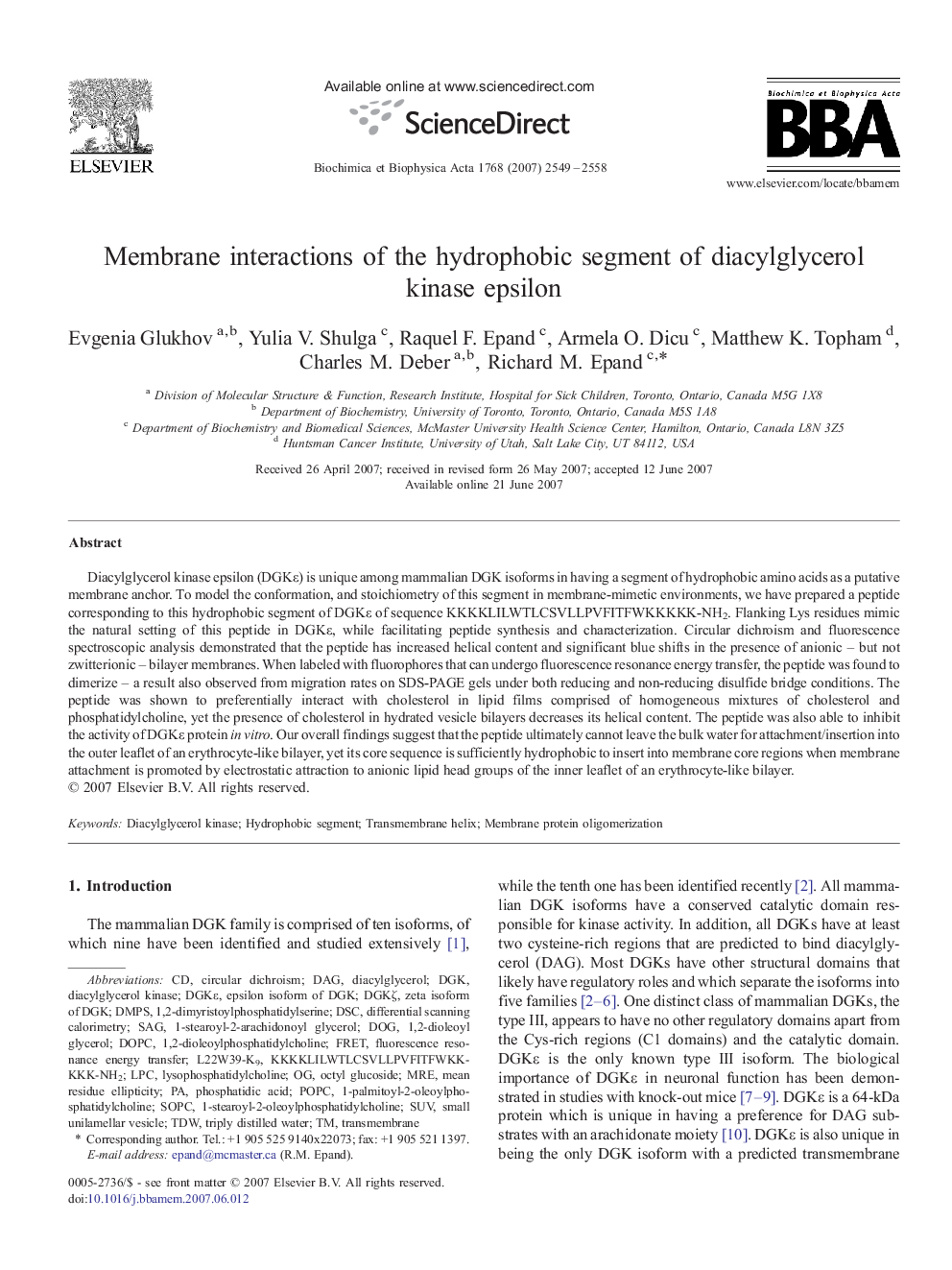| Article ID | Journal | Published Year | Pages | File Type |
|---|---|---|---|---|
| 1945677 | Biochimica et Biophysica Acta (BBA) - Biomembranes | 2007 | 10 Pages |
Diacylglycerol kinase epsilon (DGKε) is unique among mammalian DGK isoforms in having a segment of hydrophobic amino acids as a putative membrane anchor. To model the conformation, and stoichiometry of this segment in membrane-mimetic environments, we have prepared a peptide corresponding to this hydrophobic segment of DGKε of sequence KKKKLILWTLCSVLLPVFITFWKKKKK-NH2. Flanking Lys residues mimic the natural setting of this peptide in DGKε, while facilitating peptide synthesis and characterization. Circular dichroism and fluorescence spectroscopic analysis demonstrated that the peptide has increased helical content and significant blue shifts in the presence of anionic – but not zwitterionic – bilayer membranes. When labeled with fluorophores that can undergo fluorescence resonance energy transfer, the peptide was found to dimerize – a result also observed from migration rates on SDS-PAGE gels under both reducing and non-reducing disulfide bridge conditions. The peptide was shown to preferentially interact with cholesterol in lipid films comprised of homogeneous mixtures of cholesterol and phosphatidylcholine, yet the presence of cholesterol in hydrated vesicle bilayers decreases its helical content. The peptide was also able to inhibit the activity of DGKε protein in vitro. Our overall findings suggest that the peptide ultimately cannot leave the bulk water for attachment/insertion into the outer leaflet of an erythrocyte-like bilayer, yet its core sequence is sufficiently hydrophobic to insert into membrane core regions when membrane attachment is promoted by electrostatic attraction to anionic lipid head groups of the inner leaflet of an erythrocyte-like bilayer.
